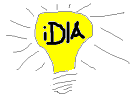| Deletions are marked like this. | Additions are marked like this. |
| Line 49: | Line 49: |
| * ''The Wisdom of Teams: Creating the High-Performance Organization'' by Jon R. Katzenbach, Douglas K. Smith (ISBN: 0060522003) |
Team formation
- Forming, Storming, Norming, Performing, Adjourning (Tuckman and Jensen, 1977)
Team forming, Team building, Team management, Team/Project assesment (Teaching Teamwork in Information Systems by Connie E. Wells, from Challenges of Information Technology Education in the 21st Century 1930708343)
Team characteristics
- Katzenbach and Smith, 1993
- Small size (2-25, 3-5)
- Complementary skills
- Commitment to a common purpose
- Have performance goals and approach
- Hold themselves mutually accountable
Skopec & Smith, 1997
- Identity
- Mission
- Great expectations
- Commonly accepted procedures
- Feedback
- Team-building
- Hoffer, et al., 1996
- Selection of team members
- Having a common purpose (goal) and a commitment to the goal
- Mutual trust among competent team members
- Interdependence among team members
- Good communication among members
- Sense of empowerment and proper support from management
- Team-building skills (from training)
- Socializing and celebration
Essential behaviors
Cooperation
Communication
Counterproductive behaviors
Social Loafing (Latane, Williams, & Harkins, 1979) (Karau & Williams, 1993) (Hackman, 1986) The reduction of individual contributions within a group.
Free Riders (Sweeney, 1973) don't perform in a group, believing their individual effort isn't important.
Sucker Effect (Johnson & Johnson, 1997) Good performers slack off to avoid others taking advantage of them.
Competition, individual goals become more important than common goal. Mixed motives.
Over-cooperation, leading to overconformity and poor decision making.
Quotes
"Two insights about teams emerged early, consistently, and very emphatically from our interviews. First, high performance teams have both a clear understanding of the goal to be achieved and a belief that the goal embodies a worthwhile or important result. Second, whenever an ineffectively functioning team was identified and described, the explanation for the team's ineffectiveness involved, in one sense or another, the goal. The goal had become unfocused; the goal had become politicized; the team had lost a sense of urgency or significance about its objective; the team's effort had become diluted by too many other competing goals; individual goals had taken priority over team goals; and so on." -- Teamwork: What Must Go Right/What Can Go Wrong By Carl E. Larson, Frank M. J. Lafasto (0803932901)
References
Group Dynamics for Teams by Daniel Levi (0761922547)
The Wisdom of Teams: Creating the High-Performance Organization by Jon R. Katzenbach, Douglas K. Smith (ISBN: 0060522003)
